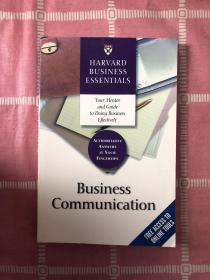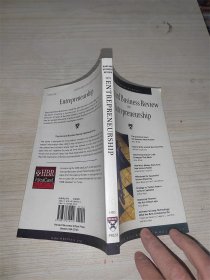
Harvard Business Review on Building Better Teams
¥ 23 1.2折 ¥ 190 八五品
仅1件
作者Harvard Business Review(哈佛商业评论) 著
出版社Perseus
出版时间2011-05
版次1
装帧精装
上书时间2024-10-26
- 在售商品 暂无
- 平均发货时间 2小时
- 好评率 暂无
- 最新上架
商品详情
- 品相描述:八五品
图书标准信息
- 作者 Harvard Business Review(哈佛商业评论) 著
- 出版社 Perseus
- 出版时间 2011-05
- 版次 1
- ISBN 9781422162347
- 定价 190.00元
- 装帧 精装
- 开本 32开
- 纸张 胶版纸
- 页数 240页
- 正文语种 英语
- 【内容简介】
-
Most teams underperform. Yours can beat the odds.
If you need the best practices and ideas for superior team building--but don't have time to find them--this book is for you. Here are 10 inspiring and useful perspectives, all in one place.
This collection of HBR articles will help you:
- Boost team performance through mutual accountability
- Motivate large, diverse groups to tackle complex projects
- Increase groups' emotional intelligence
- Reverse the fortunes of a struggling team
- Prevent decision deadlock
- Extract results from a bunch of touchy superstars
- Fight constructively with top-management colleagues
- Ensure productivity in far-flung teams
- 【作者简介】
-
Those who aspire to help create and then lead create teams that deliver high-impact results will find the material in this HBR book invaluable. It is one of the volumes in a series of anthologies of articles that first appeared in Harvard Business Review. Authors of the ten articles focus on one or more components of a process by which to boost team performance through mutual accountability, motivate large and diverse groups, increase team members' emotional intelligence, salvage an under-performing team, prevent or overcome decision deadlock, extract excellent results from "a bunch of touchy superstars," compete constructively senior-level colleagues, and ensure productivity of far-flung teams.
Having read all of the articles when they were published individually, I can personally attest to the brilliance of their authors' (or co-authors') insights and the eloquence with which they are expressed. Two substantial value-added benefits should also be noted: If all of the articles were purchased separately as reprints, the total cost would be at least $60-75; they are now conveniently bound in a single volume for a fraction of that cost.
I now provide two brief excerpts that are representative of the high quality of all ten articles:
In "The Discipline of Teams," Jon Katzenbach and Douglas K. Smith offer some practical suggestions that are relevant to almost any team (whatever its objectives) in almost any organization (whatever its size and nature may be). They suggest that a team's essential discipline comprises five characteristics:
1. A meaningful common purpose that the team has helped to shape.
2. Specific performance goals that flow from the common purpose.
3. A mix of complementary skills.
4. A strong commitment to how the work gets done.
5. Mutual as well as individual accountability.
They also discuss several different approaches that have worked well for many high-impact teams:
o Establish urgency, demanding performance standards, and clear direction.
o Select members for skill and skill potential, not personality.
o Pay particular attention to first meetings and actions because initial impressions always mean a great deal, for better or worse.
o Set crystal clear rules of behavior
In "The Tough Work of Turning Around a Team," former NFL head coach Bill Parcells offers this advice:
"If you want to get the most out of people, you have to apply pressure - that's the only thing that any of us really responds to. As a coach, I've always tried to turn up the heat under my people, to constantly push them to perform at a high level.
"Creating pressure in an organization requires creating confrontation, and it can get very intense, very emotional. I've seen coaches avoid confrontations with their players because they don't like conflict, and I assume the same thing is true among the leaders of business teams. But I've actually come to relish confrontation, not because it makes me feel powerful but because it provides an opportunity to get things straight with people. It's nit until you look people in the eye that you get to the sources of their behavior and motivation. Without confrontation, you're not going to change the way they think and act."
Other articles in this anthology I especially enjoyed include "Why Teams Don't Work" (Diane Coutu), `Building the Emotional Intelligence of Groups" (Vanessa Urch Druskay and Steven B. Wolff), and "How Management Teams Can Have a Good Fight" (Kathleen M. Eisenhardt, Jean L. Kahwajy, and L.J. Bourgeois III).
相关推荐
-

Harvard Business
全新常德
¥ 12.00
-

HARVARD BUSINESS RECIEW
九品衡水
¥ 11.96
-

Harvard business review
九品广州
¥ 180.00
-

harvard business essentials
九品北京
¥ 15.00
-

Harvard Business Review
九品镇江
¥ 59.00
-

Harvard Business Review
八五品南京
¥ 6.00
-

HARVARD BUSINESS ESSENTIALS
九品北京
¥ 15.00
-

HARVARD BUSINESS ESSENTIALS
八五品北京
¥ 50.00
-

Harvard Business Revie
八五品哈尔滨
¥ 160.00
-

Harvard Business review。
八品哈尔滨
¥ 10.00
— 没有更多了 —
















以下为对购买帮助不大的评价